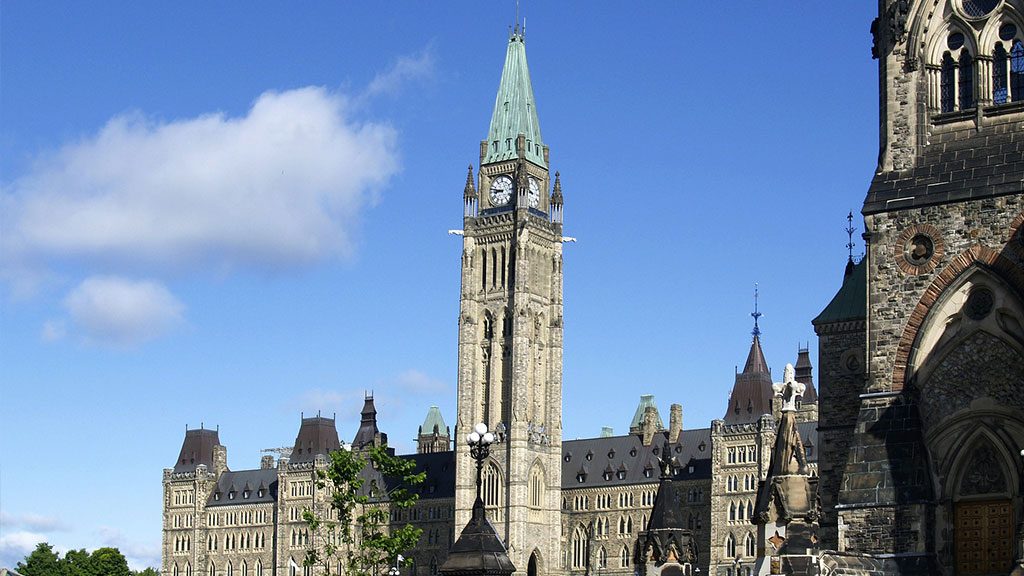National construction indsutry leaders agree there were few surprises in this year’s federal budget and little mention of infrastructure spending, however, many lauded the government initiatives to expand the skilled trades workforce.
Finance Minister Bill Morneau tabled Budget 2018 — Equality + Growth: A Strong Middle Class, in Ottawa Feb. 27.
“It was a ‘stay the course’ budget with no new large spending initiatives,” said John Gamble, president and CEO of the Association of Consulting Engineering Companies — Canada, adding most of the infrastructure addressed in the budget had to do with money that was previously allocated.
“The budget reaffirms the government’s previous $180 billion in commitments to infrastructure but the funding will be distributed at a slower rate than originally anticipated.
“Over the next four to five years, increases in infrastructure investment will be more modest than originally proposed and instead there will be an increase in infrastructure investments in the latter half of the 12-year commitment.”
The budget showed more than $3.8 billion from Phase 1 of the plan will not be spent until at least 2021. It was supposed to be spent by the end of the month, reads an article from the Canadian Press.
According to the budget, “the funding profiles for a number of federal infrastructure programs have been updated for Budget 2018 to reflect when the government expects to receive claims from recipients. The government is also finalizing negotiations with the provinces and territories to provide long-term funding through integrated bilateral agreements.”
A spokesman for Infrastructure Minister Amarjeet Sohi said the new numbers reflect when the government expects to receive expense claims from cities and provinces, a process that often creates a lag between when work takes place and when the federal money is spent.
In some cases, the government won’t receive receipts until after a project is completely finished. In other cases, projects are delayed because of labour strife, bad weather or other factors beyond Ottawa’s control.
Sohi spokesman Brook Simpson said the budget changes reflect that reality.
The second phase of spending, which is still subject to these negotiations, has also seen its funding moved around: the government now says more than $3 billion earmarked for an earlier phase won’t be spent until at least 2025, with the majority of that spending to take place in 2028.
The only way we’re going to replace the nearly 300,000 people we need is with women, Indigenous people, new Canadians and youth
— Robert Blakely
Canada’s Building Trades Unions
Sean Reid, vice-president and regional director, Ontario, for the Progressive Contractors Association of Canada, said the budget takes one step forward and two steps back and “neglects two pillars of the Canadian economy — infrastructure and natural resources.”
“There was very little mention of either of those sectors in the budget and that was very troubling for us,” said Reid. “We appreciate the desire to move more underrepresented communities into the workforce but we still have to do the basics right. By not attending to our flagging infrastructure in Canada and not dealing with a lagging resource sector adequately in this budget, the government has missed the mark.”
Canadian operating officer for Canada’s Building Trades Unions Robert Blakely said he was pleased with the Trudeau government’s budget overall, and with the reallocation of the infrastructure funding.
“We’re pretty happy that they reprofiled money that didn’t get spent on infrastructure, which is code for move it forward, as opposed to saying we didn’t spend it so let’s put it into what could become a surplus and carry on,” Blakely commented.
He was also pleased with the government’s focus on the trades.
The Government of Canada is allocating $19.9 million over five years to pilot an Apprenticeship Incentive Grant for Women. Under the grant, women would receive $3,000 for each of their first two years of training. Funding will also be provided for a new Pre-Apprenticeship Program that will encourage underrepresented groups — including women, Indigenous people, newcomers and people with disabilities — to consider careers in the skilled trades.
The government is investing $46 million over five years in the program.
“There are obviously a number of excellent new incentives that the government is putting in place to attract new people into our workforce and to broaden the scope of Canada’s workforce and that’s a good thing. We’ve been calling for more action on that for a long time,” Reid explained.
“We’ve been relying on ‘construction people’ to fill our workforce up until now but the reality is we have to attract ‘non-construction’ people into the construction trades if we want to continue to be able to have the workforce capacity that we need moving forward.”
The Canadian Construction Association (CCA) said it too is pleased the government is recognizing the labour shortage that the industry will face over the next few years and its support for training,
“We need to have skills training and the better alignment of skills for our industry,” said Chris McNally, chair of the CCA. “We’re glad that they’re putting more into education, it’s very important for us. With technology changes we are going to need more and more skilled workers.”
Blakely said the finance minister made it clear in his budget speech he wants to encourage women and underrepresented groups to pursue careers in male-dominated Red Seal trades. He pointed out baby boomers are leaving the industry in droves.
“Every other social and commercial institution in Canada is facing the same challenge, so everybody is fishing in the same pond,” said Blakely. “The only way we’re going to replace the nearly 300,000 people we need is with women, Indigenous people, new Canadians and youth. Some of the stuff that’s in the budget is absolutely first class in terms of meeting a challenge that is going to happen.”
— With files from the Canadian Press











Recent Comments
comments for this post are closed